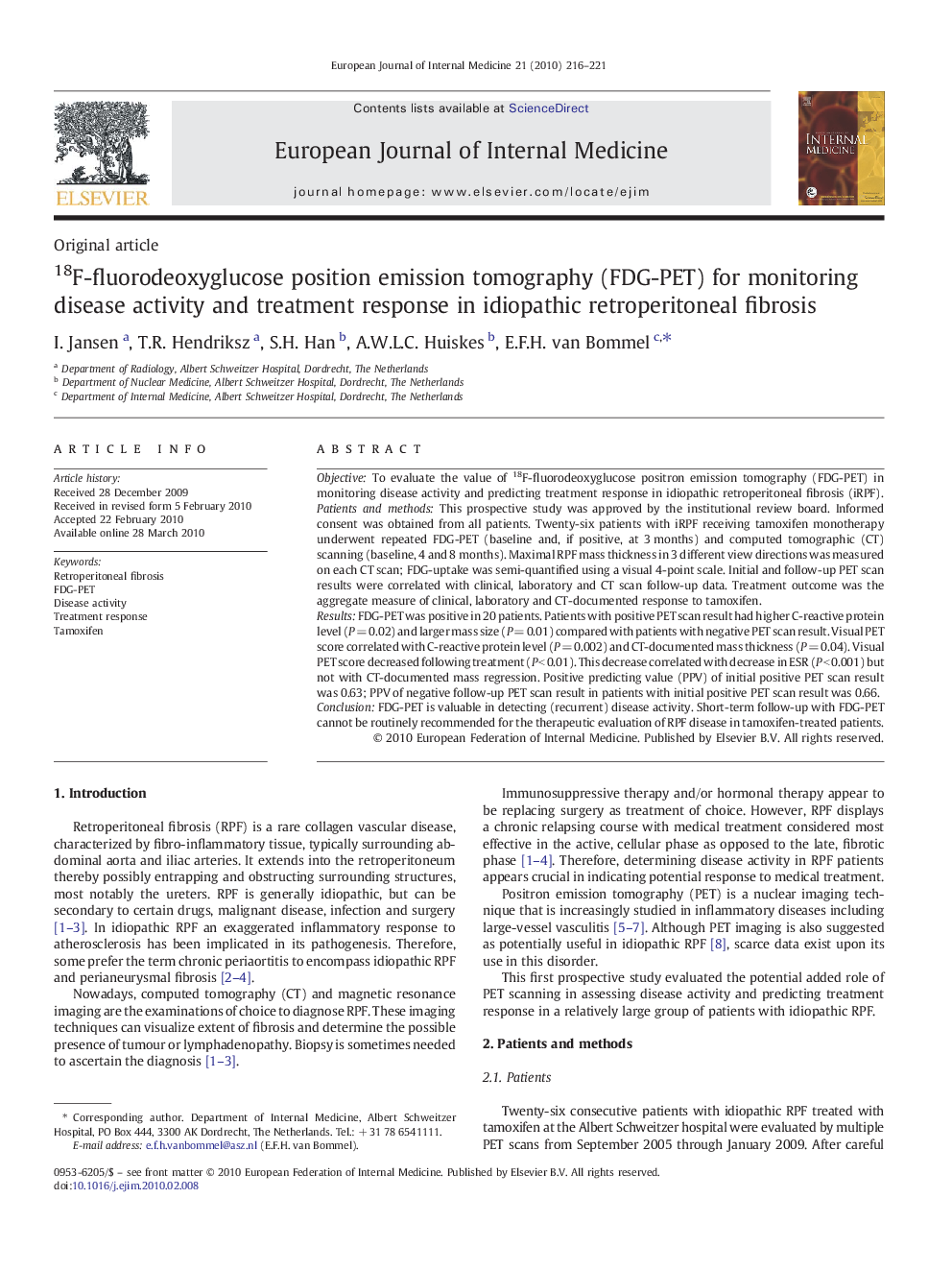| کد مقاله | کد نشریه | سال انتشار | مقاله انگلیسی | نسخه تمام متن |
|---|---|---|---|---|
| 3466578 | 1596587 | 2010 | 6 صفحه PDF | دانلود رایگان |

ObjectiveTo evaluate the value of 18F-fluorodeoxyglucose positron emission tomography (FDG-PET) in monitoring disease activity and predicting treatment response in idiopathic retroperitoneal fibrosis (iRPF).Patients and methodsThis prospective study was approved by the institutional review board. Informed consent was obtained from all patients. Twenty-six patients with iRPF receiving tamoxifen monotherapy underwent repeated FDG-PET (baseline and, if positive, at 3 months) and computed tomographic (CT) scanning (baseline, 4 and 8 months). Maximal RPF mass thickness in 3 different view directions was measured on each CT scan; FDG-uptake was semi-quantified using a visual 4-point scale. Initial and follow-up PET scan results were correlated with clinical, laboratory and CT scan follow-up data. Treatment outcome was the aggregate measure of clinical, laboratory and CT-documented response to tamoxifen.ResultsFDG-PET was positive in 20 patients. Patients with positive PET scan result had higher C-reactive protein level (P = 0.02) and larger mass size (P = 0.01) compared with patients with negative PET scan result. Visual PET score correlated with C-reactive protein level (P = 0.002) and CT-documented mass thickness (P = 0.04). Visual PET score decreased following treatment (P < 0.01). This decrease correlated with decrease in ESR (P < 0.001) but not with CT-documented mass regression. Positive predicting value (PPV) of initial positive PET scan result was 0.63; PPV of negative follow-up PET scan result in patients with initial positive PET scan result was 0.66.ConclusionFDG-PET is valuable in detecting (recurrent) disease activity. Short-term follow-up with FDG-PET cannot be routinely recommended for the therapeutic evaluation of RPF disease in tamoxifen-treated patients.
Journal: European Journal of Internal Medicine - Volume 21, Issue 3, June 2010, Pages 216–221